Nosso processo artesanal
A louça de Porches é realmente feita à mão, um produto artensanal genuíno produzido localmente por uma pequena equipa de artistas e artesãos. Utilizamos a técnica antiga de majolica que existe desde mais que 1000 anos, e que chegou no sul da França antes do período renascentista. Aqui vamos explicar um pouco sobre a nossa filosofia como artesãos, e dar uma breve descrição do nosso processo, elaborando sobre as nossas técnicas que nos permitem produzir a nossa louça colorida.
Nosso processo passo-a-passo
Como é que a nossa loiça májolica é feita ...
1. Barro: Um material natural e sustentável
Needless to say, all pottery begins with the clay, in our case it is red clay that is dug from the earth here in Portugal. This is the clay that is used to create earthenware, an amazing rustic material that has been used for the purpose of creating vessels since human pre-history. One of humanity's earliest technologies, it is both sustainable and natural.

After extraction, it must be processed to remove any impurities. This is a multi-step technique that is very technical. The clay must be sieved and strained for any unwanted particles, like limestone deposits or even small stones. Then it will be pugged and extruded to eliminate air bubbles. Any stray materials that remain in the clay could easily result in unwanted blemishes in the glazed surface or to cracked and ultimately broken pots emerging from the kiln, squandering many hours of diligent work. This is the foundation and cannot be hurried.

2. Formato: O barro humilde torna-se em cerâmica
We stay loosely within the broad library of traditional Portuguese pot shapes, to which we occasionally add a new idea, but for the most part the shapes that we use are those handed down and honed through many, many generations of Portuguese craftspeople.
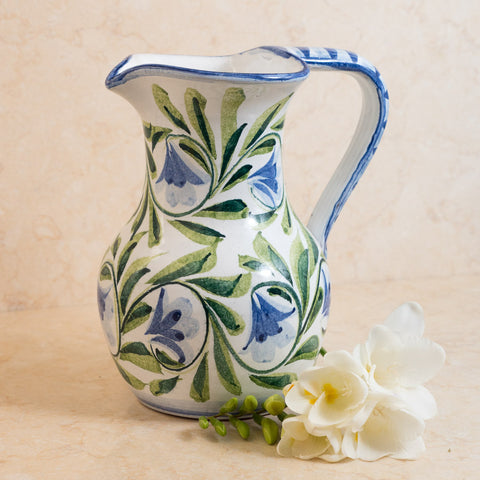
Where appropriate certain articles are created using various mould techniques, such as a ‘jig’, a ‘press’, or a plaster molds. The jig and press are especially apt tools to create pieces that need to have regularity, such as dinner plates. Whereas any item that is rectangular or square cannot be thrown on a wheel (the centrifugal nature of the wheel makes non-round shapes impossible), and in this case a mould is most often employed.
The formed pots will be air dried slowly, and some items will be joined, cut or fretted by hand, before the biscuit firing. This initial firing is completed to a low temperature, ensuring that the clay retains a lot of its absorbency this will allow it to retain the porosity needed to accept the glaze in the next crucial step. The consequence is that the pottery is very fragile at this moment, hence the term ‘biscuit ware’ is applied to the pottery at this stage - it is brittle and fragile.
3. Vidrado: A tela branca em que nós pintamos
Next, we hand glaze the ‘biscuit ware’ in an opaque white glaze. In essence, this means submerging the biscuit ware manually into a bath of viscous, creamy white glaze. In other words we dip it! This task seems easy to the untrained eye, but it is actually a discrete and difficult skill that takes knowledge, patience, and attention to detail to execute well. Too little glaze will reveal the red clay below and too much may not adhere well to the clay’s surface leading to defects that will emerge in the final firing. The glazer must assess the viscosity of the glaze, mixing it very carefully and diligently, and they must have a keen understanding of the clay itself, continuously re-assessing the absorbency and judging the duration of time a piece must be submerged in the glaze bath to ensure a perfect coating.

This glazed pottery could now be fired to create a beautiful, simple white pottery - the type you find in many places - but this for us is only the beginning. This is the powdery white canvas on which our real work begins.
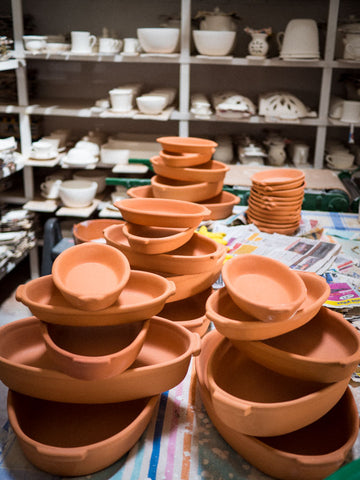
4. Pintura: A energia contida em uma marca pintada livremente
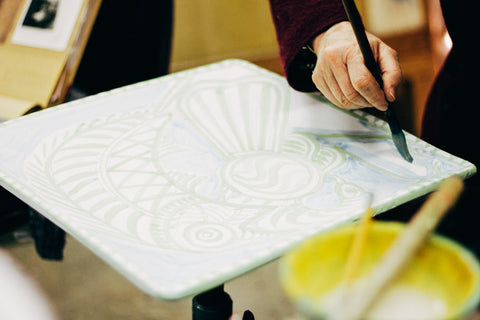
It takes many, many years to develop the free, confident, light-flowing hand that all of our painters have, and only the most talented painters can ever really aspire to the point of creating the elaborate, novel designs that you will find shining down on you from the pottery's walls. It is a combination of skills and critically talent that allows for this.

We use simple, soft brushes and paint directly onto the un-fired glaze using metal oxides suspended in water. Different metal oxides possess different colour properties: manganese is pink and copper is green, though the most famous must be cobalt which is blue - but interestingly before firing cobalt blue is not the vigorous blue we know, but a soft lilac colour. This presents an added challenge to the artist working with it.

The glaze has the character of powdered sugar and is very absorbent, sucking the moisture from the brushes, much as you would find in painting a fresco. This demands a deft confidence on the part of the decorator who must stride forward in the work. So, we do not acknowledge ‘mistakes’ in the painting. This way of thinking is inherently unhelpful to the free flow and inhibits the energy required to paint successfully. Unintended marks, like a dribble, splatter or a splash, even an errant line cannot be corrected and thus must be considered to be evidence of the humanity in the process and embraced. It is a liberating technique once embraced, but can be extremely frustrating to those trained in other types of painting where revision and precision are possible.
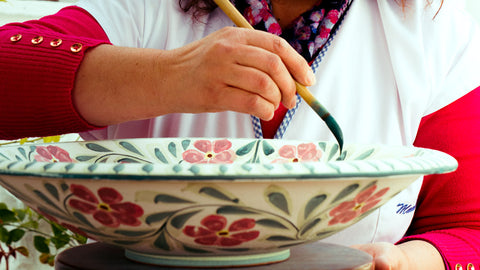
We work with a variety of different floral designs that each painter will adapt using their intuition to each individual shape in their own way. Some painters will favour one or two patterns over others, those that fit their intuition better. These patterns are our own, some have emerged from an in depth study of ancient pottery and others evolve from an imaginative interpretation of local indigenous flowers. And we regularly stray from these patterns, experimenting with new colour arrangements, playing with scale, or combining various elements to create new ideas.
Sadly, a website cannot truly capture this abundance of variety, it can be only truly be appreciated by visiting us in person. You will see both the painters painting and their finished pieces all together in the same space.

6. Vidrado Transparente: O toque final
When the pottery has been painted, it is ready for the final coat of glaze. The last layer of glaze is transparent and is applied in our process using a spray. It is this final layer that gives the pots their final creamy-smooth, glossy finish when fired. As the paint is now held, sandwiched irrevocably between the two layers of glaze, one opaque and the other clear, it is often described as an 'underglaze painting'.
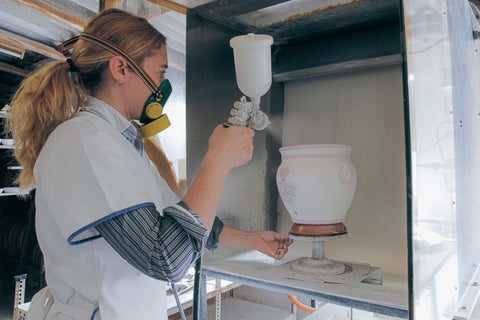
7. Cozedura dos vidrados: Onde a magía acontece
To achieve even firings the stacking of the kiln must be done with utmost care. The density must be distributed carefully, allowing the heat to percolate around each of the pieces evenly, preventing cool or hot spots, aiming for an even firing overall. No easy task when dealing with the bewildering breadth of shapes of pots, tiles and plaques made at Porches Pottery. It takes a lot of experience, spatial awareness and a keen attention to detail.
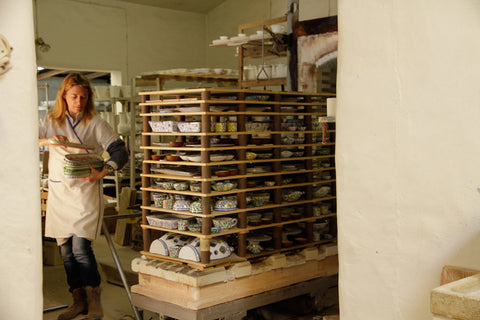
8. Abraçando a imperfeição: A qualidade humana.
Ultimately, our process is a rustic and traditional one, we make pottery entirely by hand using ancient techniques, in this we must accept a certain rate of attrition and embrace the small defects and irregularities that are inextricable from a genuinely handmade process. In fact, when you come to appreciate them, these are the very soul of the production and evidence of the many hands work that go into each unique item. No machine is capable of creating such wonderfully unruly human items.
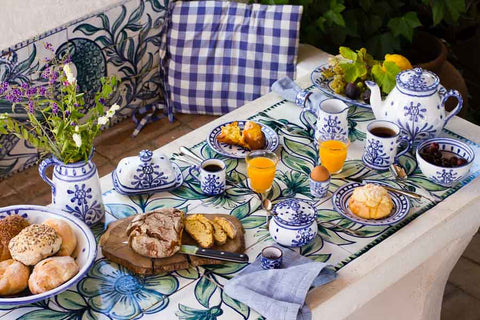
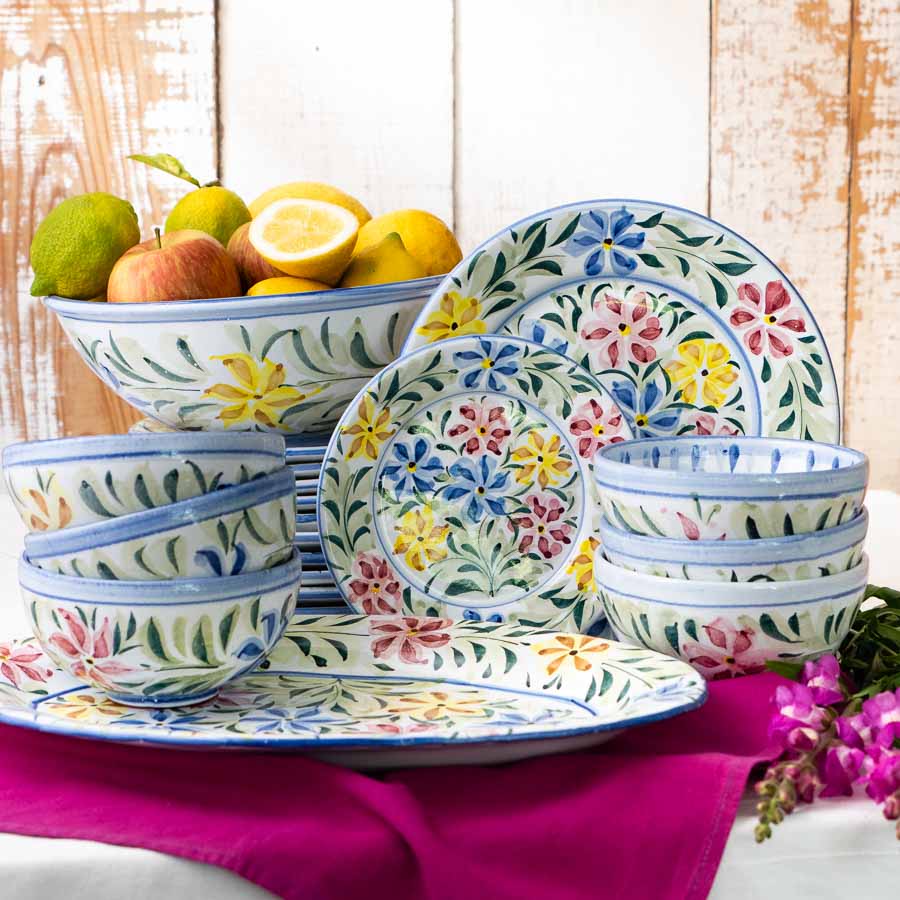
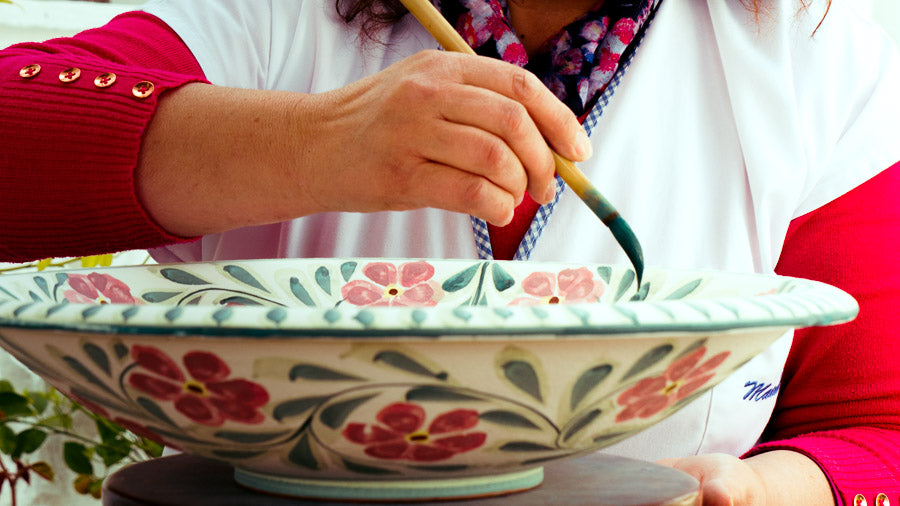
Compre a nossa loiça online
Compre a nossa loiça exclusiva feita à mão e pintada à mão online.
Coleções
-
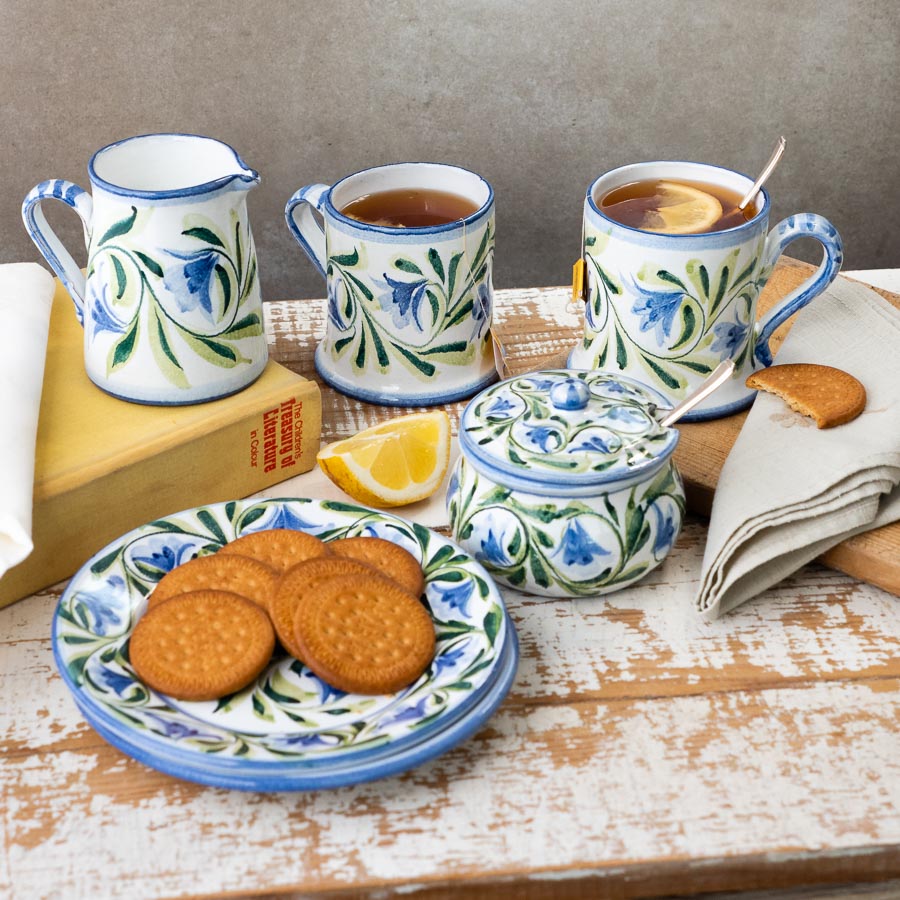
Coleção Pequeno Almoço
Todas as peças que precisa para uma linda mesa de pequeno almoço.
-
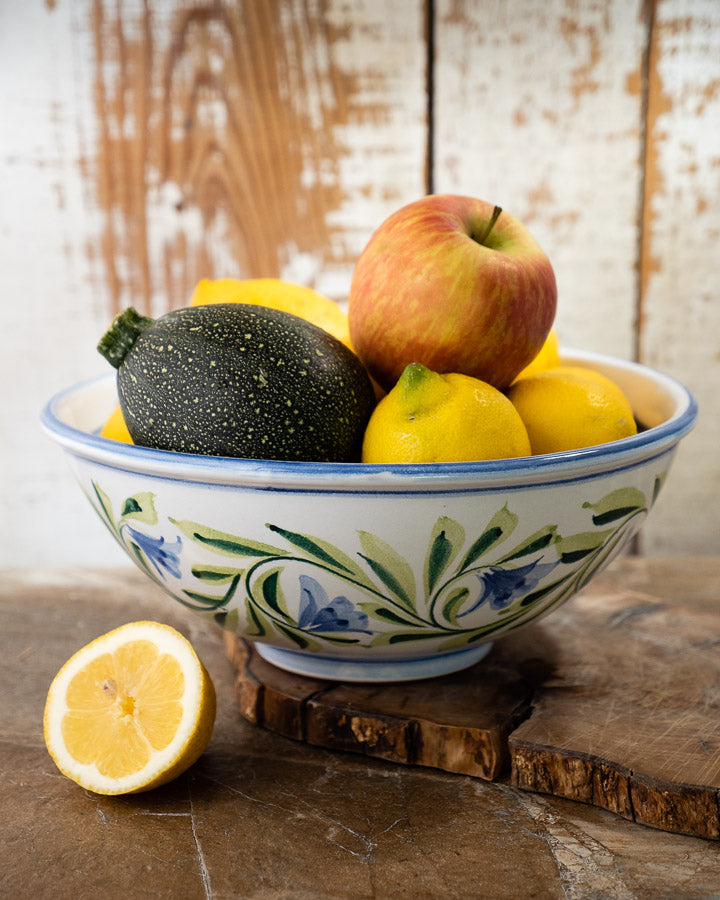
Coleção Cozinha
Cerâmica bonita e funcional para sua cozinha.
-
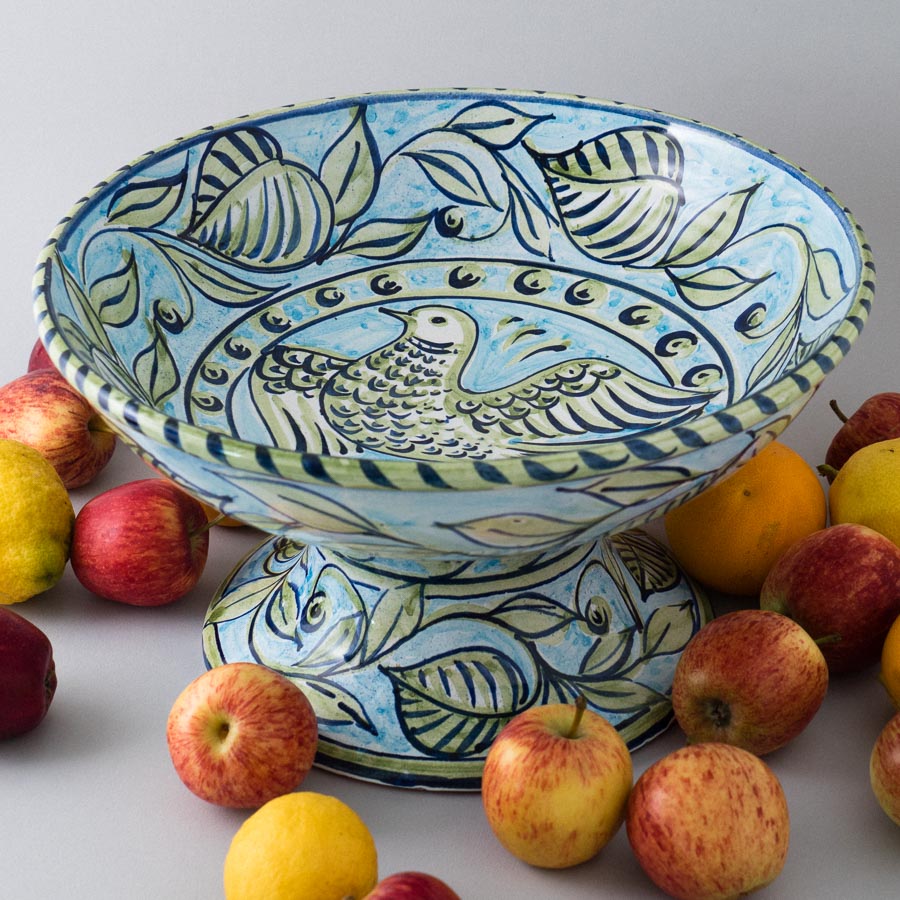
Coleção Peças Especiais
As Peças Especiais são potes e azulejos únicos que nos marcaram, que...



